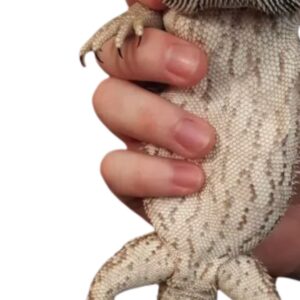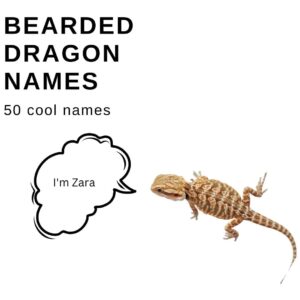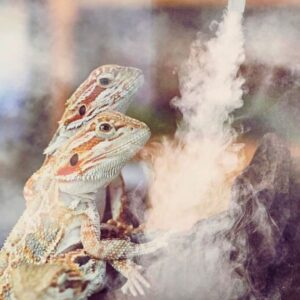Bearded dragons, known scientifically as Pogona can be found in the wild across most of Australia. Before the export ban in the 60’ they were already held as pets in the US.
Beardies have a preference for warm, arid areas such as deserts, subtropical woodlands, savannas, and scrublands.
So, today we will replicate the natural bearded dragon habitat in a tank to provide the most comfortable environment for your beardie.
Bearded Dragon Habitat: Table of Contents
What kind of habitat does a bearded dragon need?
Being cool-blooded animals, bearded dragons require external heat sources to raise their body temperature, which fluctuates depending on the temperature of their environment. Bearded dragons often bask in the sun to warm themselves, and they can burrow underground to avoid extreme heat and predators.
In addition to their ground-dwelling behavior, bearded dragons are semi-arboreal and can sometimes be found on fence posts and tree branches.
So how to replicate this in their enclosure?
- Thank size: around 120 gallons.
- Tank materials: glass or acrylic
- Substrate: a combo of sand and mats.
- Temperature adjustment: high: 95-110°F (35-43°C) and low 75-85°F (24-29°C). To achieve these temperatures you will need UVA and UVB lights.
- Humidity level up to 40% max.
- Decor and enrichment for healthy beardie
- Hygiene and maintenance
How do you make a bearded dragon habitat?
An ideal bearded dragon tank should provide enough space for the reptile to move, explore, and exhibit natural behaviors.
You will need:
Optimal Tank Size
| Bearded dragon age | Tank size |
| Baby – adult | 55-gallon (190L+) |
| Adult – senior | 120 gallon (280-455L) |
The tank size for a bearded dragon depends on its age and size.
For a baby bearded dragon, a 40-gallon tank is recommended as a minimum size. However, it’s better to start with a larger tank, such as a 55-gallon tank, to accommodate their growth.
For adult bearded dragons, a tank with a minimum size of 75 gallons – 120 gallons should give enough space to move, and add hiding spots and accessories for a comfortable life.
Tank Materials
| Tank material | Pros | Cons |
| Glass | DurableGood visibilityResistant to scratchingMore secureKeep good humidity and temperature levels | PricingDifficult to move |
| Acrylic (plastic, PVC) | AffordableEasy to modify (drill holes, add accessories)Easily replaceable | Easy scratch and reduced visibility Not as sturdy |
The tank should be made of a sturdy and durable material. Glass aquariums or terrariums with a secure lid are the most durable option. These provide good visibility and can maintain heat and humidity levels effectively. The tank should have smooth surfaces without any sharp edges that could potentially harm the bearded dragon.
Alternative to glass are acrylic enclosures, but they get easily scratched which lowers visibility. The price of acrylic enclosures is about 10x more affordable and can be replaced.
Aquariums, tanks, and enclosures of larger sizes are difficult to find on Amazon, however, I found an acrylic 75-gallon option for $54.99
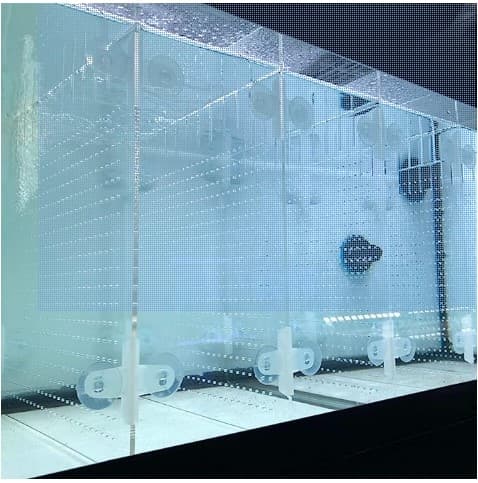
You can see it here.
Other available glass options are approx 69 gallons, so if you are looking for an enclosure for a baby to small bearded dragon you can see it here.
Substrate
There are discussions between passionate bearded dragon owners and experienced breeders on the topic of the ideal substrate for beardies.
To imitate the natural habitat passionate owners mix send and ground, while experienced breeders care more about hygiene and ease of clean.
The main issue with desert-like sand substrates is the lack of calcium compared to deserts in Australia. Bearded dragons are perfectly capable to catch prey and ingest small amounts of sand. However, the reason why most don’t recommend sad for beardie pets is the risk of impaction and pore-clogging.
Substrate options include reptile carpet, newspaper, paper towels, or ceramic tiles.
If you do decide to include sand, make sure that the feeding area is sand free. In this way, your dragon won’t ingest sand.
Reptile carpets are cheap and easy to clean and could be used together with a mixture of sand and ground.
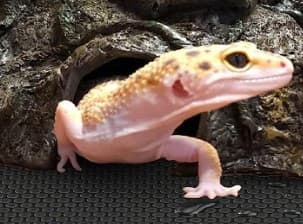
You can find a retile carpet here.
By including the best of both worlds you can still imitate natural habitat while keeping a tank clean and safe.
Newer reptile carpets are made from materials that are not sticky and are nail-safe.
Temperature and Lighting
| Temperature gradient | Temperature |
| Basking spot | 95-110°F (35-43°C) |
| Cool spot | 75-85°F (24-29°C) |
Bearded dragons require a temperature gradient in their tank. One end of the tank should have a basking spot with a temperature of around 95-110°F (35-43°C), while the other end should have a cooler spot around 75-85°F (24-29°C).
A full-spectrum UVB light should meet their UVB requirements for calcium metabolism and overall health.
UVB Lighting: Bearded dragons require UVB light to synthesize vitamin D3 for calcium metabolism and overall health. It’s recommended to use a fluorescent UVB bulb specifically designed for reptiles.
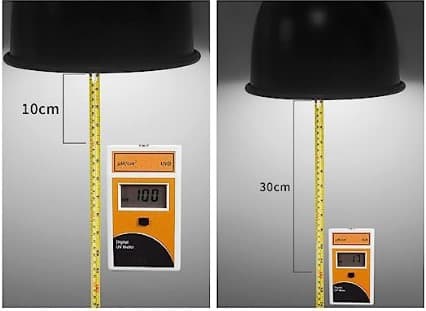
A popular option among beardie parents is the ReptiSun 10.0 UVB bulb, which can be found here.
Place the UVB bulb inside the tank, approximately 12 to 18 inches above the basking area.
Basking Light: A halogen heat bulb with a wattage between 75 and 100 watts creates a basking spot with temperatures ranging from 100 to 110°F (38 to 43°C). Ensure the basking light covers only a portion of the tank, allowing the dragon to move away from the heat if needed.
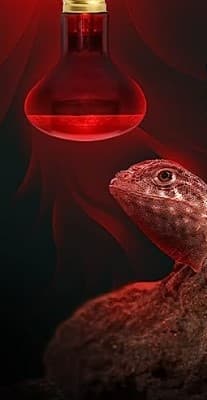
You can find suitable basking bulbs here.
Lighting Fixtures: To position the UVB and basking bulbs, you’ll need fixtures. Consider using a fixture that allows you to adjust the height and angle of the bulbs for optimal placement.
Dome fixtures with ceramic sockets and reflective surfaces have to be securely mounted to prevent accidents and ensure proper heat and UVB distribution.
Light Timers: To mimic natural day and night cycles is easily achieved by using a light timer. Set the timer to provide 12 to 14 hours of light and 10 to 12 hours of darkness each day. This helps regulate your dragon’s sleep patterns and promotes overall well-being.
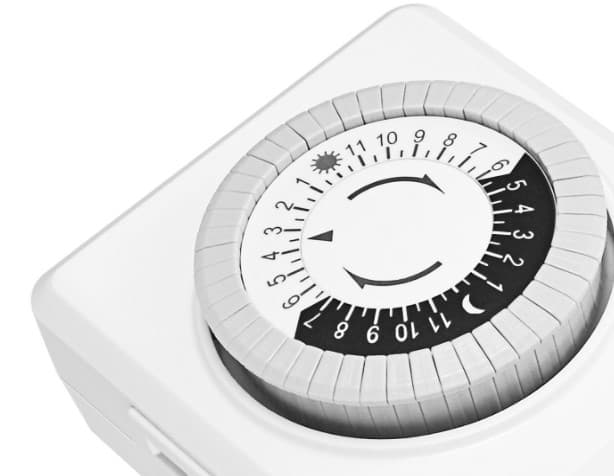
Light timers are fairly affordable and you can find them here.
Additional Considerations: Apart from the main lighting setup, beardies need a “cool side” in the tank where the temperature is lower to thermoregulate.
Ceramic heat emitters can be used to maintain the ambient temperature in the tank during the night without emitting visible light, as bearded dragons require a dark period for proper sleep.
Humidity
The optimal humidity level for bearded dragons is generally between 30% to 40% relative humidity.
Excessively high or low humidity can lead to health issues for bearded dragons. When the humidity is too high, it can cause respiratory problems and increase the risk of fungal and bacterial infections.
On the other hand, low humidity can lead to dehydration and shedding problems for bearded dragons.
To monitor humidity levels, use a reliable hygrometer in the bearded dragon’s enclosure. Hygrometers can be either mechanical or digital, and they help you measure and monitor the humidity accurately.
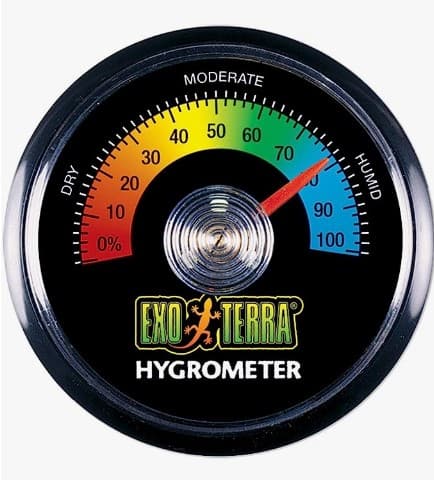
You can find the hygrometer here.
If the humidity is too high, there are several ways to lower it in the bearded dragon tank:
- Increase ventilation
- move the water bowl away from heat sources
- change substrate
- reduce misting
- use a dehumidifier if necessary
On the other hand, if the humidity is too low, you can:
- raise the water bowl by placing it near the hot side of the tank
- mist more frequently
- add live plants to the habitat
Decor and Enrichment
The tank should include hiding spots, basking areas, and climbing structures such as branches or rocks. This allows the bearded dragon to engage in natural behaviors and provides mental stimulation.
Best is to use natural materials, wood, and rock or bricks.
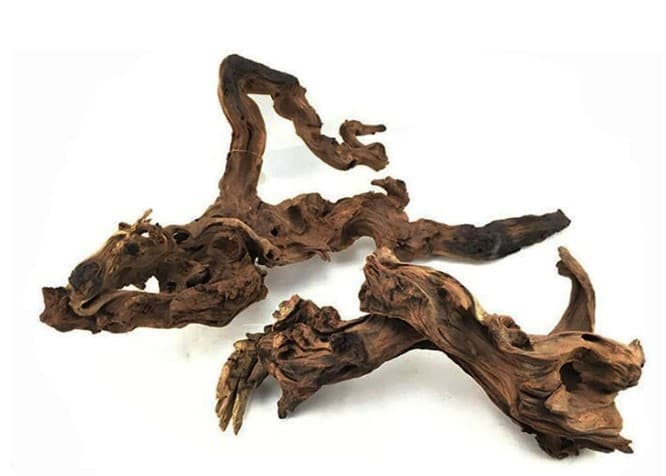
If you can’t find a good hollow log that has a tall branch for beardie to climb to adjust their temperature you can find some options here.
Hygiene and Maintenance
Spot clean the tank daily to remove waste, and do a thorough cleaning at least once a month. Use reptile-safe disinfectants and cleaners to maintain a clean and hygienic environment for the bearded dragon.
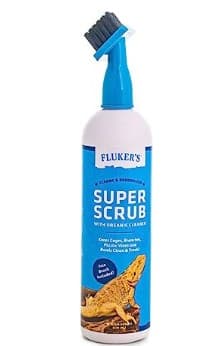
A good cleaner option is Flukers Super Scrub Brush with Organic Cleaner, you can find it here.
Bearded dragon habitat takeaways
Let’s recap on mimicking natural habitat in an enclosure for bearded dragons.
| Enclosure setup | Takeaways | Recommended product |
| Optimal Tank Size | Around 120 gallons for adult-senior, and smaller 55 gallons for babies | Recommended product |
| Tank Materials | Glass is better but can be quite expensive. You can use acrylic as a temporary solution or replace them when scratched. | Recommended product |
| Substrate | Use a combination of reptile mats and desert-like sand. The eating area should be sand free. | Recommended product |
| Temperature and Lighting | Basking spot95-110°F (35-43°C)Cool spot75-85°F (24-29°C) | Recommended product Recommended product Recommended product |
| Humidity | Up to 40% max | Recommended product Recommended product |
| Decor and Enrichment | Use natural wood, rocks, and bricks | Recommended product |
| Hygiene and Maintenance | Use eco-friendly and reptile-safe products | Recommended product |
My Senior Paws is a participant in the Amazon Services LLC Associates Program, an affiliate advertising program designed to provide a means for sites to earn advertising fees by advertising and linking to Amazon.com. We also participate in other affiliate programs which compensate us for referring traffic.


